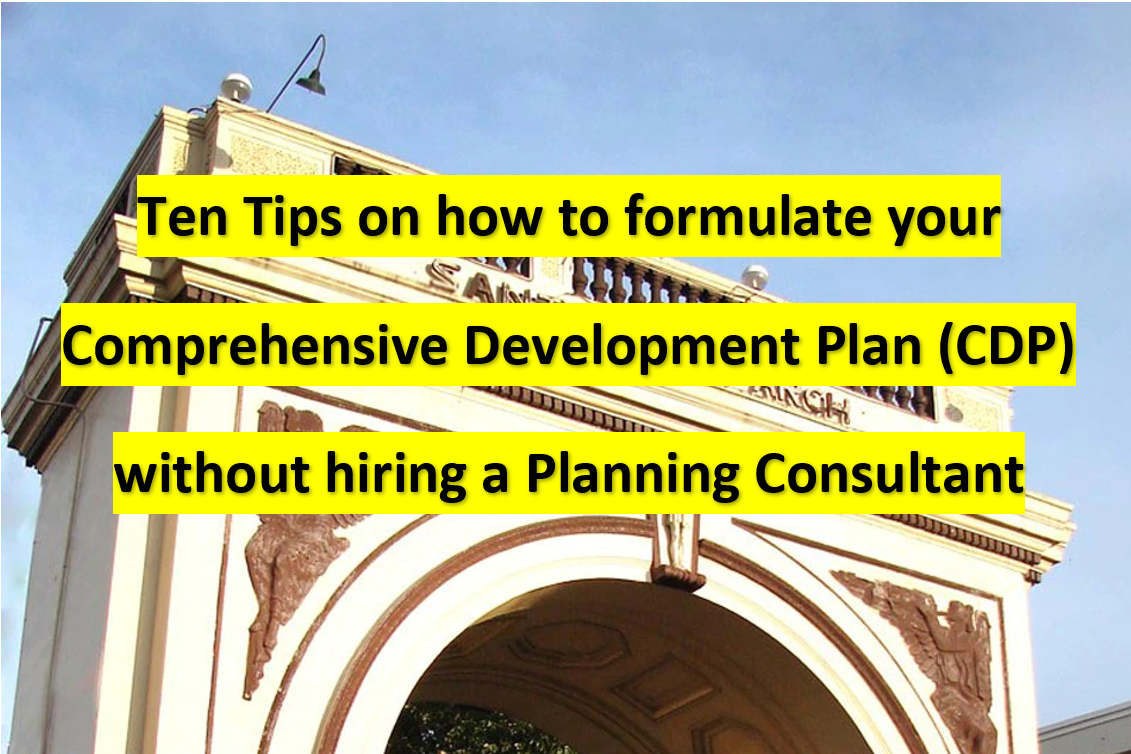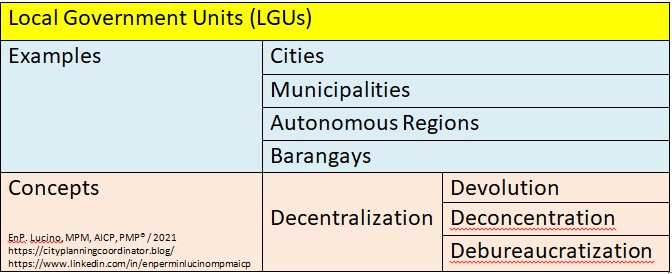As a City Planner, there are local projects that I am personally excited to see accomplished. Some of these projects are the City Community College, City eco-tourism Park, and the City Pyrolysis facility, among others.
For this blog, I’ll focus on our on-going City Pyrolysis facility project.
Santa Rosa is a medium sized progressive city in the Philippines. The population growth rate of the city is higher than the population growth rate of the Philippines, CALABARZON region, and the Province of Laguna. This means that more people are attracted to live, study, or work in the City. The continuous increase in population also increases the waste specifically solid wastes output of the city. The city does not have its own dumpsite. Even if the city would want to establish its dumpsite it is no longer feasible. Hence, the city brings its solid wastes to its neighbouring city’s private dumpsite which at present is almost at its maximum capacity. The Solid Waste Management Plan of the City identified strategies to reduce, reuse, and recycle our solid wastes. One of the identified strategies of the city is the establishment of a Pyrolysis facility.
Pyrolysis is the heating of both organic and non-organic materials using very high temperature, in the absence of oxygen. Pyrolysis of organic materials produces three products: one liquid (bio-oil), one solid (bio-char) and one gaseous (syngas) while pyrolysis of non-organic materials also produces solid, liquid, and gaseous fuels. This means that the solid wastes of the city would not be dumped in dumpsites located in other local government units. It will be processed within the city in its pyrolysis facility. The products of the facility can be stored and used as recycled energy source. The city may also opt to promote the facility as one of its economic enterprises wherein solid wastes of other cities will be processed in the city for a fixed fee/payment. The earnings may be further used to fund its environmental programs.
I believe that one of the important events that influenced the City in establishing its own Pyrolysis facility was our Study Tour for the NEXUS Project “Waste Water Management and Energy Recovery of Biogenic Wastes” in Berlin, Germany on March 18 -23, 2014. The trip was sponsored by Deutsche Gesellschaft fűr Internationale Zusammenarbeit (GIZ) GmbH and the Federal Ministry for Economic Cooperation and Development (BMZ). The objective of the study trip is to promote institutional and personnel local capacities for Integrated Resource Management sustainably in selected Asian cities. Hon. Arlene B. Arcillas our City Mayor, Engr. Maria Amor A. Salandanan from the City Environment and Natural Resources Office, Mr. Celso Catindig from the City General Services Office, and I participated in the study tour.
Nexus Project
The Integrated Resource Management in Asian Cities: the Urban NEXUS rationale is to prepare pilot cities (including Santa Rosa) in the growing demand for water, energy and food by more than 50% by 2050. The increase in demand is due to rapid urbanization in Asian cities, high migration rates, and increasing supply problems. The Nexus Approach is to introduce new technologies to increase water, energy and food production efficiency. It is an integrated holistic urban planning and management of resources that promotes cross-sectorial planning thus breaking down the said “silos”. The identified Metropolitan Solutions are the following: establishment of energy efficiency of buildings; adjustment of tariffs (consumption oriented and cost covering); strengthening of building codes and energy labeling for increased transparency; application of subsidies and price signals to incentivize energy-efficient investments; use of integrated design approaches and innovations; development and application of advanced technology to enable energy-saving; strengthening of workforce capacity for energy saving; and mobilization of a culture of energy-awareness.
2014 Study Tour for the NEXUS Project “Waste Water Management and Energy Recovery of Biogenic Wastes”
The itinerary of the study tour includes learning visit to three major waste facilities: a modern recycling sorting plant, a sewage treatment plant, and a biogas and waste incineration plant.
First is we visited the ALBA Sorting Plant at Alt-Mahlsdorf 123,12623 Berlin. The theme of the visit is “Recycling at the source and further processing”. The visit includes an introduction to the system and a guided walk tour of the sorting plant. The ALBA sorting was commissioned in 2005 and is – even on an international scale – the most modern of its kind. We saw in the facility how waste packaging and other items made of plastic composites, tinplate and aluminum are being sorted.
The second facility we visited was the Schonerlinde Sewage Treatment Plant at Muhlenbeckerstrasse, Berliner Wasserbetriebe, Neue Judenstrare 1, 10179 Berlin, 16348 Wandlitz. The visit deepened our understanding of sewage treatment thru concrete demonstration of methods for extracting energy from the sewage sludge and the use of fermented waste for farming in the sewage treatment plant. Schonerlinde cleans 105,000m3 of wastewater daily. The tour included a theoretical introduction to the wastewater reclamation and biogas recovery and a walking tour around the sewage treatment plant.

The third and last facility we visited was the Biogas Plant and Waste Incineration Plant, Ruhleben at Freiheit 24 – 25, 13597 Berlin. The topic of the visit is the recycling of biological solid wastes for energy production and the fermented waste for farming (fertilizers, composting). The 60,000 tons of organic waste from the Berlin households are processed into biogas per year. The system works on the principle of dry fermentation process. The micro-organisms liberate biogas from the organic waste. Biogas can be used for various purposes. Cleaned, processed and concentrated, it is 98 percent of methane and is therefore chemically identical to natural gas and can be fed into the city gas network.
The Waste Incineration Plant Thermal waste treatment is an important part of a functioning waste management of the waste incineration plant (MHKW) in Ruhleben and is the core of the safe disposal in Berlin. It combines efficiency with consistent environmental orientation. Theoretical introduction to thermal waste treatment and management over the waste to energy plant were also discussed during our visit.
I realized from the Study Tour that theWaste Management System of Berlin has been implemented through years of continuous improvement. The population of Berlin and the huge amount of its waste generated necessitate the establishment of these big and advance waste management plants. Its population is mainly composed of the middle class who can pay waste management services. It greatly differs from the Santa Rosa context.
In comparison with Berlin, the City of Santa Rosa is an infant city. Our population is only around 300,000 in 2014 (during the visit) compared to millions of people living in Berlin, Germany. It is not yet recommended for our city to put up similar plants that will entail huge capital investments in 2014. If pursued, budget for other services such as social services will be affected. However, just like in Berlin, our city should start small or pilot projects similar to the concepts learned from the visited plants.
During that time, I believe that a possible application of the knowledge learned from the study trip in 2014 was the establishment of a small space dedicated to biomass facility in the city. It would be similar to the Schonerlinde Sewage Treatment Plant which uses wind energy (if feasible) to power the plant. The small biomass facility can be promoted by providing power to support its own operation and lighting streetlights within its vicinity for people to quickly appreciate the benefits of converting waste to energy.
I thought of small or pilot project applications in 2014. I was wrong. After seven years, the application is not small nor a pilot project. It is bigger and better.
2021 City Pyrolysis Facility
I believe that the Study Trip influenced the decision and strategy of our City Mayor Arlene Arcillas to establish the City Pyrolysis Facility. This will address the impending solid waste management problem, hospital wastes, etc. in the City of Santa Rosa.
The population of the city grew from 300,000 in 2014 to around 500,000 in 2021. The establishment of the pyrolysis facility is now cost-effective as compared in 2014 in terms of economies of scale (solid waste production).
The city implemented the following steps to ensure the availability of resources for the project. First, the city allocated fund for the purchase of land and land development for the pyrolysis facility site. Second, the city applied and was approved for a loan (2021) from a national government bank to fund the machines needed for the facility. Third and last, the city also prepositioned manpower to take care of the day to day operation of the facility.
The Santa Rosa Pyrolysis Plant Facility will be one of the first local government-established and managed pyrolysis facilities in the country. We are fortunate in the City of Santa Rosa because we are being led by a progressive thinking Mayor (Arlene Arcillas).
I am grateful to GIZ for including Santa Rosa as one of its NEXUS pilot cities. Our eyes and minds were opened to exciting alternatives in dealing with solid waste problems (especially during the study tour). I firmly believe that the establishment of our city’s pyrolysis facility is an offshoot of the NEXUS project.
Exciting times in the City of Santa Rosa!!
How is the solid waste management system in your city?

















